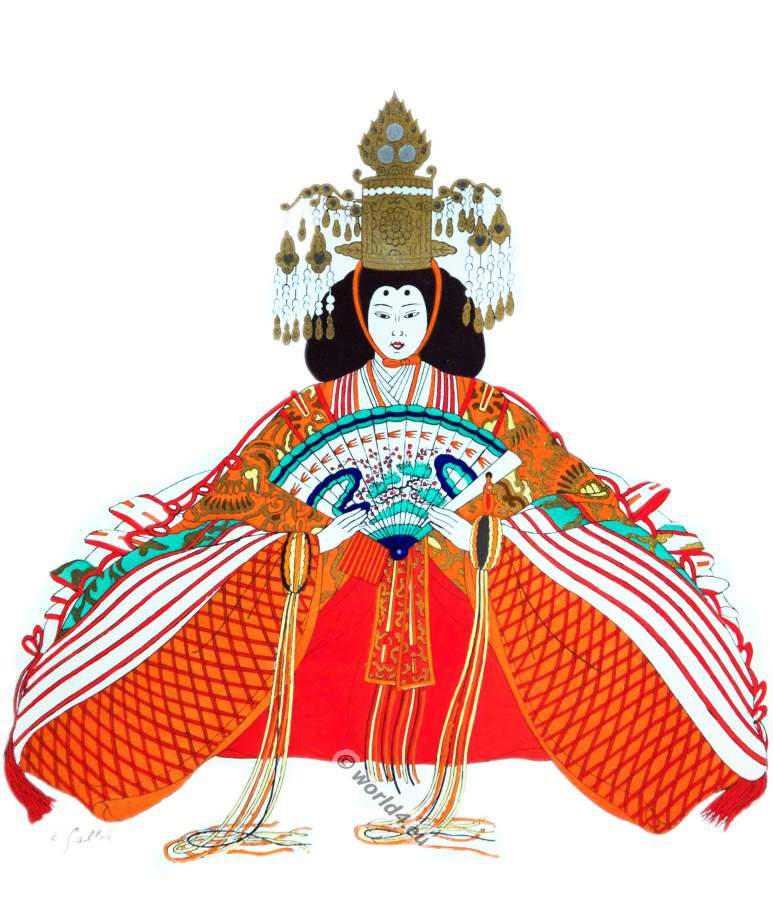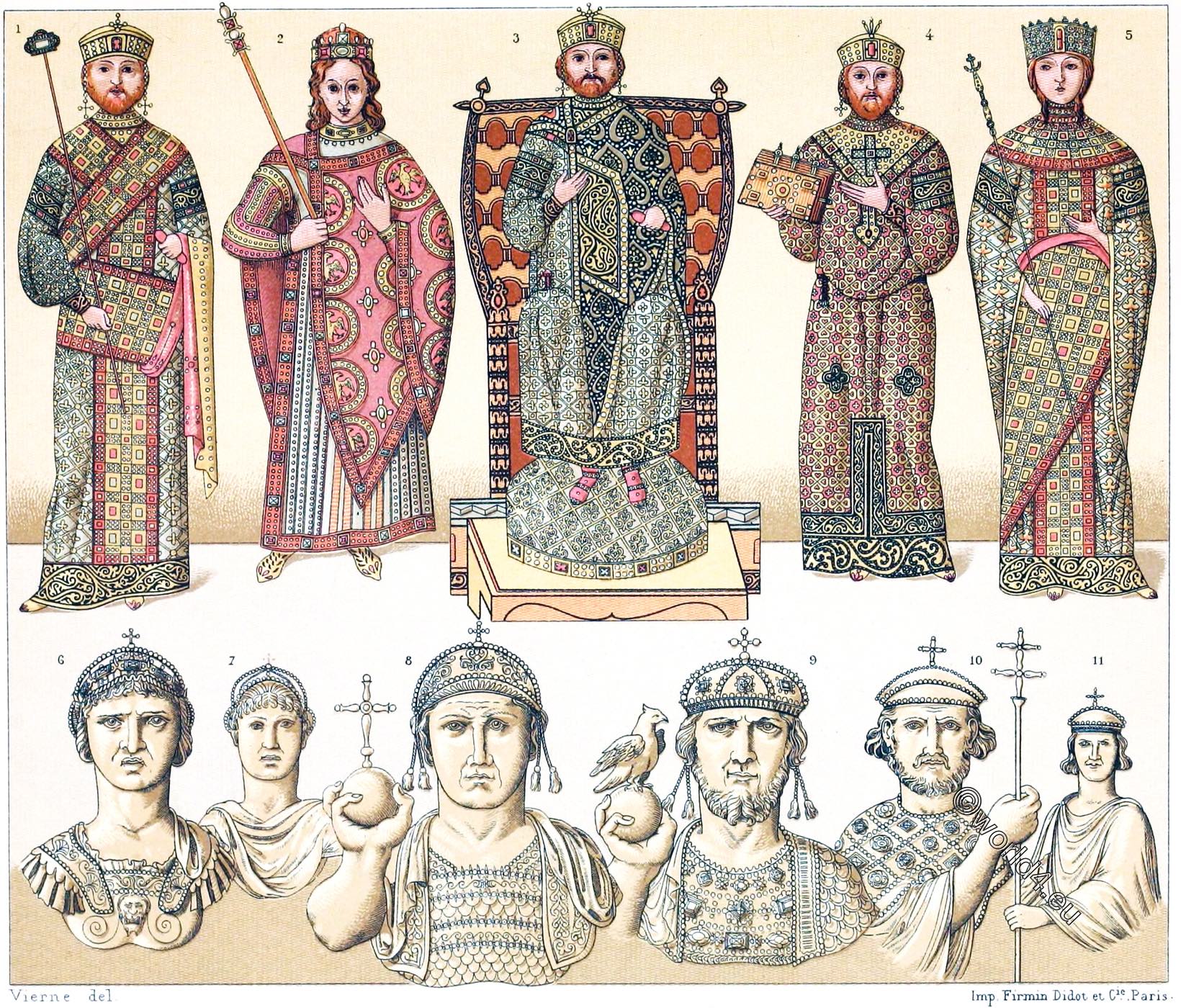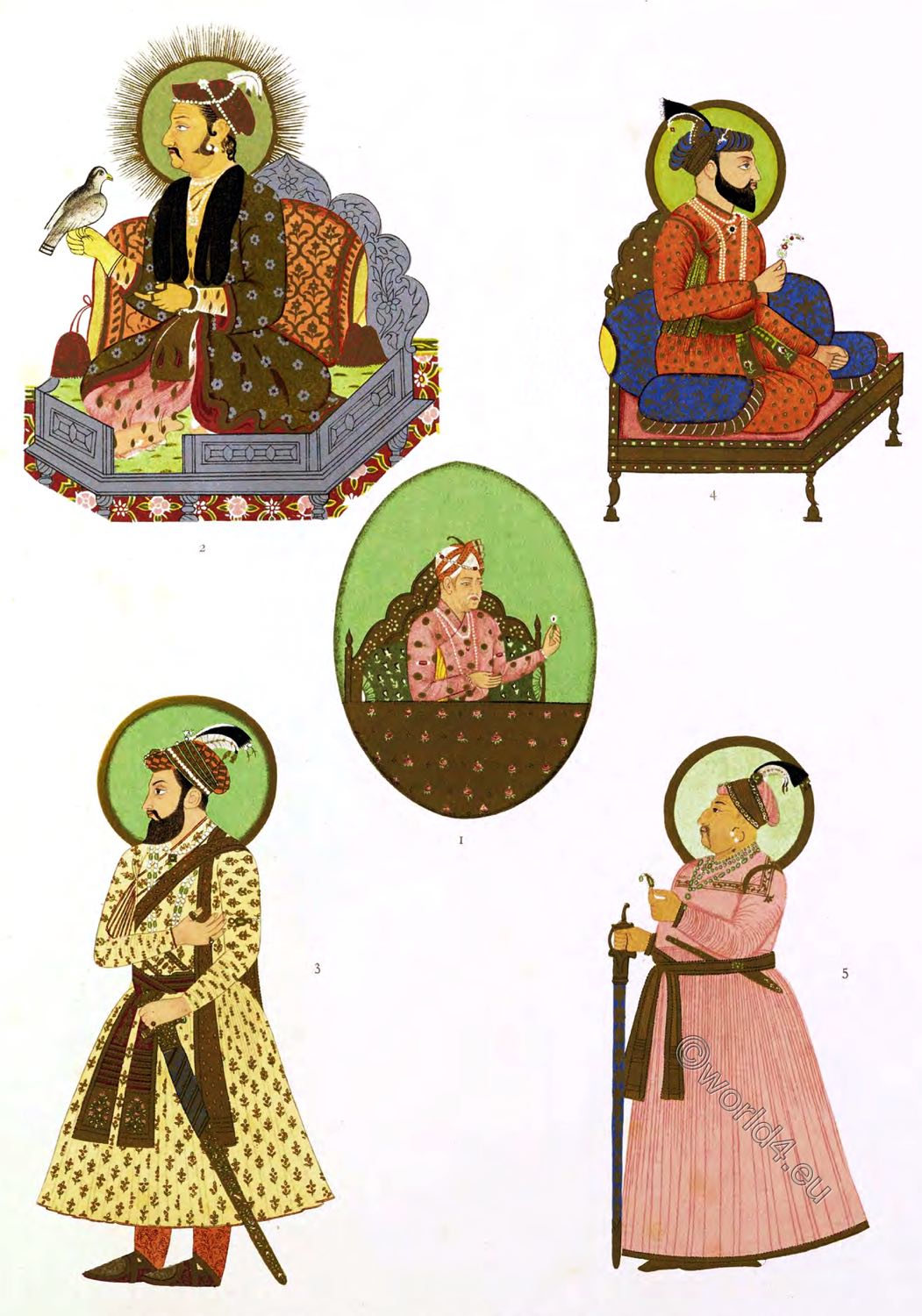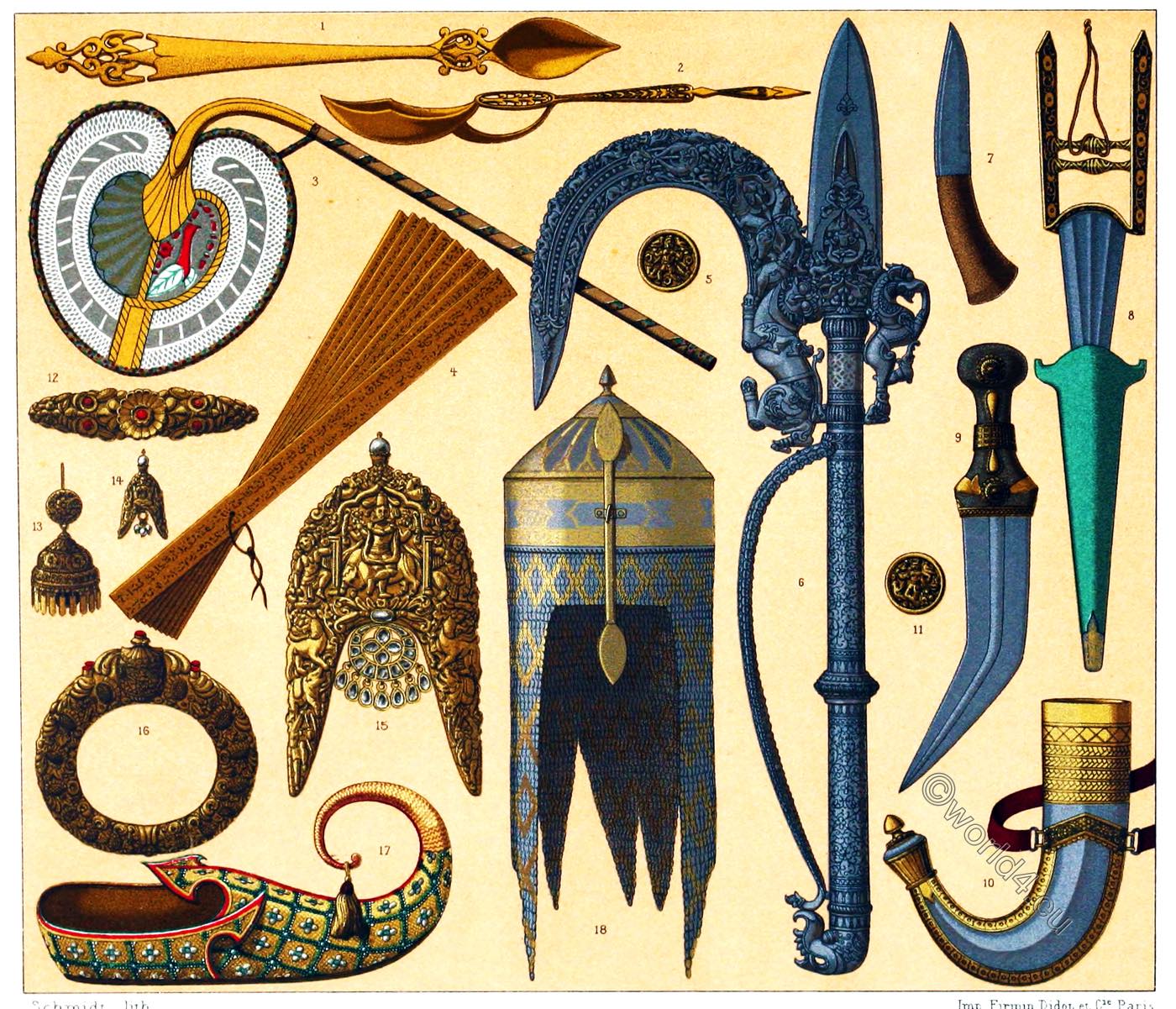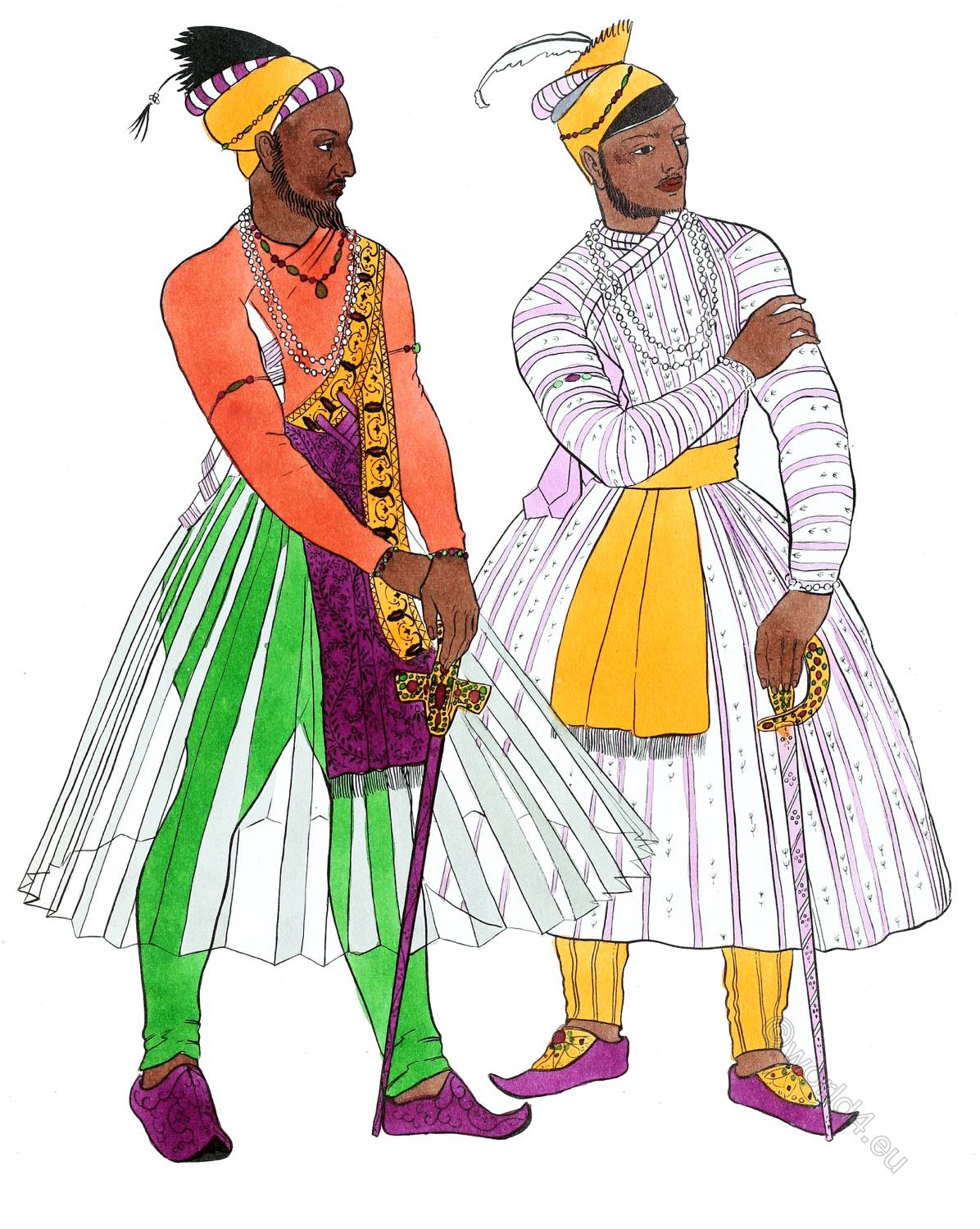
The Mughal aristocracy.
INDIA ANCIENT MUGHAL EMPERORS
Asiatic PLATE No. 19
India is that large ancient country of the Far East so greatly associated, in the western mind, with Oriental splendor, mystery, and wealth. The climate, which is basically tropical in character, varies from the extremely hot in the southeast to the cool elevations of the mountains in the north- west. The country, on the whole, is agricultural; and there are marvelous forests of rare woods, such as teak, sandalwood, satinwood, and so forth.
India presents no mean problem to the costume historian. In addition to containing within its borders a varied assortment of religions and an intricate system of hundreds of castes, all distinguished by some slight variety of dress, its history goes back to the dim past and includes, naturally, many types of people, customs, and dress.
The two figures shown here are of the Mughal aristocracy. The Mughals were those people of Mongolic extraction who overran and conquered India hundreds of years ago. The great Genghis Khan (born Temüjin, c. 1158 – August 18, 1227) was a Mughal and the men pictured here in their costly and luxuriant ensembles were members of the Mughal Dynasty.
In the East, dress has an un-Occidental way of remaining static; no serious or great changes occur, and general ensembles remain very much the same for centuries. The costumes shown here are from the early 18th century but that is no reason to believe that Indian potentates both before and after that time dressed differently.
Both men wear as their essential garment a peculiarly tailored coat called the “cabays”. The one on the left is made of a fine coral-colored satin or silk. It fits the upper body closely and doubles over the breast to fasten under the right arm with decorative ribbons. The sleeves are long and narrow—no wider than is necessary to admit the hand to be thrust through.
The remainder of the coat is tailored like a skirt-—in this instance, of a fine transparent gauze material. It is intricately pleated to stand out around the thighs and legs like a hoop skirt. Undoubtedly it is artificially stiffened. Under the skirt is worn a pair of “jodhpurs”. They are long, and fit the lower leg almost skin-tight. Above the knee they widen out considerably and, we are given to believe, were stuffed by the Mughals with some material to give them fullness. They, too, are made of some expensive cloth and, as can be seen from the figure on the right, were often decorated with stripes, embroidered patterns, and even jewels. The rich Oriental luxuriance is further enhanced by the addition of a fine wool shawl, beautifully patterned, which is bound about the waist like a sash, and of a stole-like strip of material, likewise ornate with embroidery and fringe, twisted about the upper body and crossing the left shoulder several times.
The figure on the right wears the same ensemble with minor variations. The entire coat is made of one type of material, a very fine striped and patterned cotton, and the wool sash is less intricate.
Both headdresses are complicated turbans made of a variety of materials and trimmed on top with a coxcomb of feathers. There is no doubt that these headdresses were not wound and unwound with each wearing, but were taken on and off as a hat. The shoes have the usual upturned toe of the Orient and are made either of fine soft leather, dyed and decorated, or else of some material like velvet embroidered and trimmed with jewels.
Heads were almost entirely shaved and the beards were sparse. Note the jeweled necklaces, arm bands and bracelets, and highly be jeweled sword hilts and scabbards, and the general lush Oriental richness of both ensembles.
Source: Museum Extension Project. Administration of Pennsylvania. Pennsylvania Department of Education.
Discover more from World4 Costume Culture History
Subscribe to get the latest posts sent to your email.

